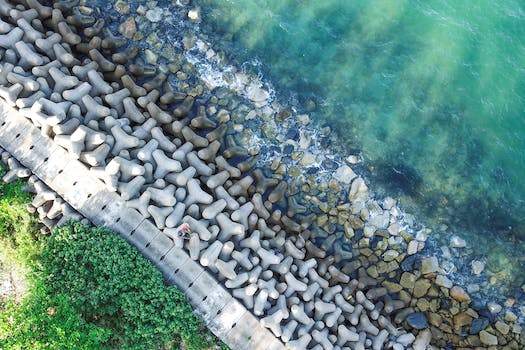

-
Table of Contents
"Effortlessly deploy and manage your Kubernetes cluster with K3D."
Introduction
Installing a Kubernetes Cluster using K3D is a straightforward process that allows you to set up a lightweight and easy-to-use Kubernetes environment. K3D is a tool that enables you to run a Kubernetes cluster inside a Docker container, making it ideal for local development and testing purposes. In this guide, we will walk you through the steps required to install and configure a Kubernetes cluster using K3D.
Getting Started with K3D: A Step-by-Step Guide to Installing a Kubernetes Cluster
Installing a Kubernetes Cluster using K3D
Kubernetes has become the go-to platform for managing containerized applications at scale. Its ability to automate the deployment, scaling, and management of applications has made it a popular choice among developers and system administrators. However, setting up a Kubernetes cluster can be a complex and time-consuming process. That's where K3D comes in.
K3D is a lightweight wrapper that makes it easy to run Kubernetes clusters in Docker. It provides a simple and efficient way to set up and manage Kubernetes clusters on your local machine or in a CI/CD pipeline. In this article, we will guide you through the process of getting started with K3D and installing a Kubernetes cluster.
Before we begin, make sure you have Docker installed on your machine. K3D relies on Docker to create and manage the Kubernetes cluster. Once you have Docker up and running, you can proceed with the installation of K3D.
To install K3D, you can use the package manager of your choice. For example, if you are using Homebrew on macOS, you can run the following command:
```
brew install k3d
```
Once the installation is complete, you can verify that K3D is installed correctly by running the following command:
```
k3d version
```
This will display the version of K3D installed on your machine. If you see the version number, it means that K3D is installed and ready to use.
Now that K3D is installed, we can proceed with creating a Kubernetes cluster. To create a cluster, you can use the following command:
```
k3d cluster create mycluster
```
This will create a new Kubernetes cluster named "mycluster" using the default configuration. K3D will automatically download the necessary Docker images and start the cluster. Once the cluster is up and running, you can verify its status by running the following command:
```
kubectl cluster-info
```
This will display information about the cluster, including the Kubernetes API server and the cluster's DNS service. If you see the cluster information, it means that the cluster is successfully created and ready to use.
Now that we have a Kubernetes cluster up and running, we can start deploying applications to it. To deploy an application, you can use a Kubernetes manifest file. A manifest file is a YAML file that describes the desired state of the application. It specifies the containers, volumes, and other resources that make up the application.
For example, let's say we have a simple web application that consists of a single container. We can create a manifest file named "webapp.yaml" with the following content:
```
apiVersion: v1
kind: Pod
metadata:
name: webapp
spec:
containers:
- name: webapp
image: nginx:latest
ports:
- containerPort: 80
```
This manifest file describes a Pod named "webapp" that runs an Nginx container on port 80. To deploy this application to the Kubernetes cluster, you can use the following command:
```
kubectl apply -f webapp.yaml
```
This will create a new Pod in the cluster and start the Nginx container. You can verify that the application is running by running the following command:
```
kubectl get pods
```
This will display a list of Pods in the cluster, including the "webapp" Pod. If you see the Pod in the list, it means that the application is successfully deployed and running.
In conclusion, K3D provides a simple and efficient way to install and manage Kubernetes clusters. With just a few commands, you can have a fully functional Kubernetes cluster up and running on your local machine. Whether you are a developer looking to test your applications or a system administrator setting up a development environment, K3D is a valuable tool to have in your toolbox.
Exploring the Benefits of Using K3D for Kubernetes Cluster Installation

Installing a Kubernetes Cluster using K3D
Kubernetes has become the go-to container orchestration platform for managing and scaling applications. However, setting up a Kubernetes cluster can be a complex and time-consuming process. That's where K3D comes in. K3D is a lightweight tool that simplifies the installation and management of Kubernetes clusters. In this article, we will explore the benefits of using K3D for Kubernetes cluster installation.
One of the key advantages of K3D is its simplicity. Unlike other tools, K3D allows you to set up a Kubernetes cluster with just a few simple commands. This makes it ideal for developers and DevOps teams who want to quickly spin up a cluster for testing or development purposes. With K3D, you don't need to worry about the intricate details of Kubernetes configuration. It abstracts away the complexity and provides a streamlined experience.
Another benefit of using K3D is its lightweight nature. K3D is built on top of Docker, which means it leverages the power of containerization to create lightweight and isolated Kubernetes clusters. This makes it easy to run multiple clusters on a single machine without any performance degradation. With K3D, you can easily create and manage multiple clusters for different projects or environments, all without consuming excessive resources.
K3D also offers a range of features that enhance the Kubernetes cluster installation process. For example, it provides support for customizing cluster configurations through the use of configuration files. This allows you to define specific settings such as the number of worker nodes, the amount of resources allocated to each node, and the networking options. With K3D, you have full control over the cluster setup, ensuring that it meets your specific requirements.
In addition, K3D simplifies the process of managing cluster resources. It provides a user-friendly command-line interface that allows you to easily create, delete, and manage clusters. You can also scale your clusters up or down based on demand, ensuring that your applications are always running smoothly. K3D also integrates seamlessly with other Kubernetes tools and platforms, making it a versatile choice for cluster management.
Furthermore, K3D offers excellent compatibility with existing Kubernetes workflows. It supports the use of Kubernetes manifests, allowing you to deploy and manage applications using familiar tools and processes. This means that you can leverage your existing knowledge and skills when working with K3D, saving time and effort in the long run.
In conclusion, K3D is a powerful tool for installing and managing Kubernetes clusters. Its simplicity, lightweight nature, and range of features make it an excellent choice for developers and DevOps teams. With K3D, you can quickly set up and manage multiple clusters, customize configurations, and seamlessly integrate with existing Kubernetes workflows. Whether you are a beginner or an experienced Kubernetes user, K3D can greatly simplify the cluster installation process and enhance your overall Kubernetes experience.
Advanced Techniques for Installing and Managing a Kubernetes Cluster with K3D
Installing a Kubernetes Cluster using K3D
Kubernetes has become the go-to platform for managing containerized applications at scale. Its ability to automate deployment, scaling, and management of applications has made it a popular choice among developers and system administrators. However, setting up a Kubernetes cluster can be a complex and time-consuming process. That's where K3D comes in.
K3D is a lightweight wrapper around the Kubernetes container runtime, Docker. It allows you to easily create and manage Kubernetes clusters using Docker containers. With K3D, you can spin up a fully functional Kubernetes cluster in just a few minutes, without the need for complex configuration or infrastructure setup.
To get started with K3D, you'll need to have Docker installed on your machine. Once you have Docker up and running, you can install K3D using the package manager of your choice. K3D is available for Linux, macOS, and Windows, so you can use it regardless of your operating system.
Once K3D is installed, you can create a new Kubernetes cluster by running a simple command. K3D provides a range of options to customize your cluster, such as specifying the number of worker nodes, the Kubernetes version, and the network configuration. You can also choose to enable additional features like load balancing and ingress controllers.
Once the cluster is created, you can interact with it using the Kubernetes command-line tool, kubectl. K3D automatically configures kubectl to connect to the newly created cluster, so you can start deploying and managing your applications right away. You can also access the Kubernetes dashboard to get a visual overview of your cluster and its resources.
One of the key advantages of using K3D is its ability to easily scale your cluster. With a single command, you can add or remove worker nodes to meet the demands of your applications. This flexibility allows you to scale your cluster up or down based on your workload, ensuring optimal performance and resource utilization.
K3D also provides a range of advanced features for managing your cluster. For example, you can easily upgrade your cluster to a newer version of Kubernetes without any downtime. K3D takes care of the entire upgrade process, including migrating your applications and data to the new version.
Another useful feature of K3D is its support for multi-cluster management. With K3D, you can create and manage multiple Kubernetes clusters on a single machine, making it easy to test and develop applications in different environments. You can also easily switch between clusters using the kubectl context command.
In addition to managing clusters, K3D also provides tools for managing individual containers within your cluster. You can easily start, stop, and restart containers, as well as view their logs and inspect their configuration. This level of control allows you to troubleshoot and debug your applications more effectively.
In conclusion, K3D is a powerful tool for installing and managing Kubernetes clusters. Its simplicity and flexibility make it an ideal choice for developers and system administrators who want to quickly spin up and manage Kubernetes clusters without the hassle of complex configuration. With K3D, you can focus on developing and deploying your applications, while leaving the management of your Kubernetes infrastructure to the tool. So why not give K3D a try and experience the ease and power of managing Kubernetes clusters with Docker containers?
Q&A
1. What is K3D?
K3D is a lightweight tool that allows you to run a Kubernetes cluster on your local machine using Docker.
2. How do I install K3D?
To install K3D, you can use package managers like Homebrew (for macOS) or Chocolatey (for Windows), or you can download the binary directly from the K3D GitHub repository.
3. How do I create a Kubernetes cluster using K3D?
To create a Kubernetes cluster using K3D, you can use the command "k3d cluster create [cluster_name]" in your terminal. This will create a new cluster with the specified name.
Conclusion
In conclusion, installing a Kubernetes cluster using K3D is a straightforward process that offers a lightweight and easy-to-use solution. K3D simplifies the setup and management of a Kubernetes cluster by running it within a Docker container. This approach provides a convenient way to create and test Kubernetes environments on a local machine. With its simplicity and efficiency, K3D is a viable option for developers and users looking to deploy Kubernetes clusters quickly and efficiently.












